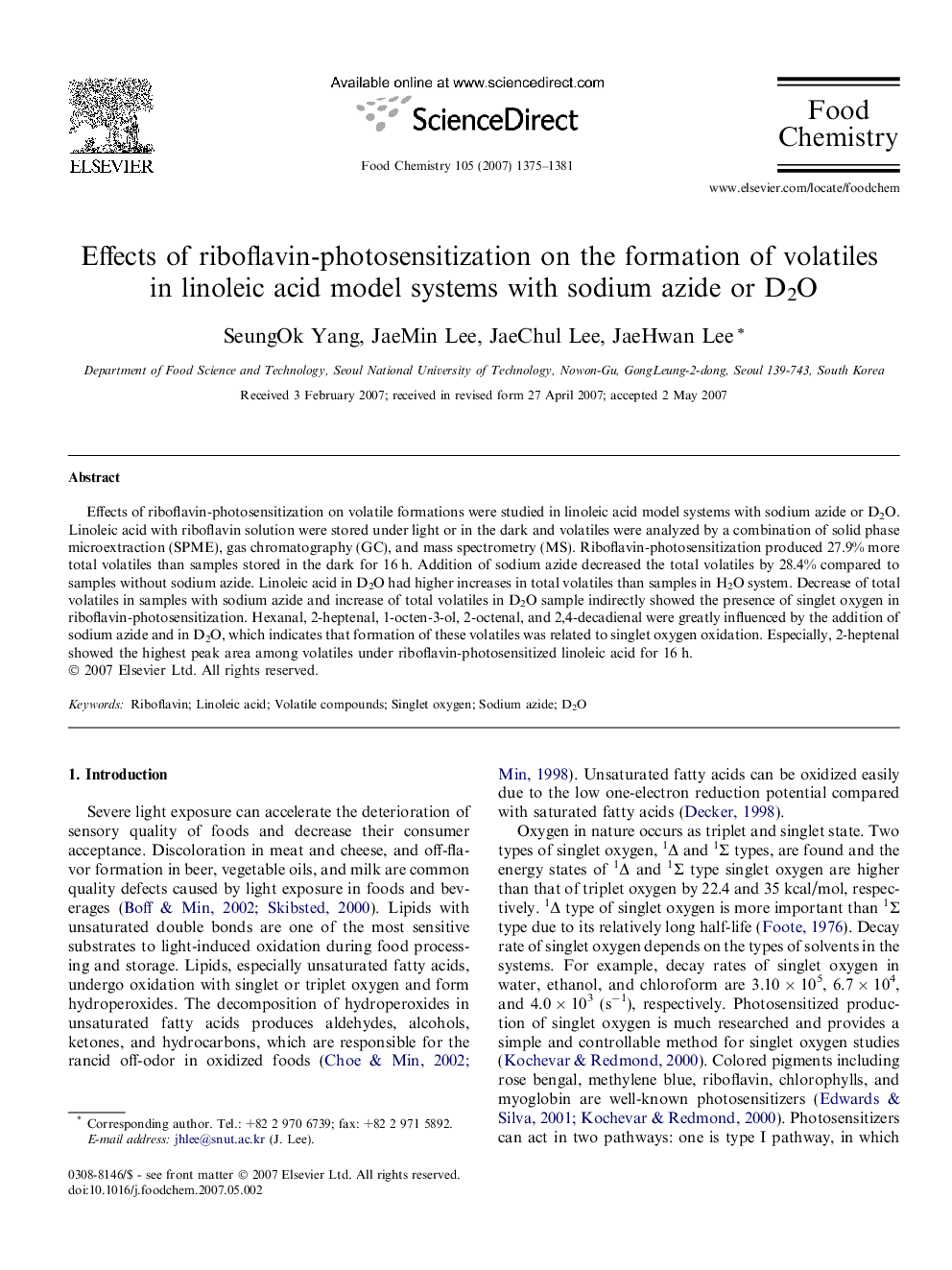| Article ID | Journal | Published Year | Pages | File Type |
|---|---|---|---|---|
| 1189303 | Food Chemistry | 2007 | 7 Pages |
Effects of riboflavin-photosensitization on volatile formations were studied in linoleic acid model systems with sodium azide or D2O. Linoleic acid with riboflavin solution were stored under light or in the dark and volatiles were analyzed by a combination of solid phase microextraction (SPME), gas chromatography (GC), and mass spectrometry (MS). Riboflavin-photosensitization produced 27.9% more total volatiles than samples stored in the dark for 16 h. Addition of sodium azide decreased the total volatiles by 28.4% compared to samples without sodium azide. Linoleic acid in D2O had higher increases in total volatiles than samples in H2O system. Decrease of total volatiles in samples with sodium azide and increase of total volatiles in D2O sample indirectly showed the presence of singlet oxygen in riboflavin-photosensitization. Hexanal, 2-heptenal, 1-octen-3-ol, 2-octenal, and 2,4-decadienal were greatly influenced by the addition of sodium azide and in D2O, which indicates that formation of these volatiles was related to singlet oxygen oxidation. Especially, 2-heptenal showed the highest peak area among volatiles under riboflavin-photosensitized linoleic acid for 16 h.
